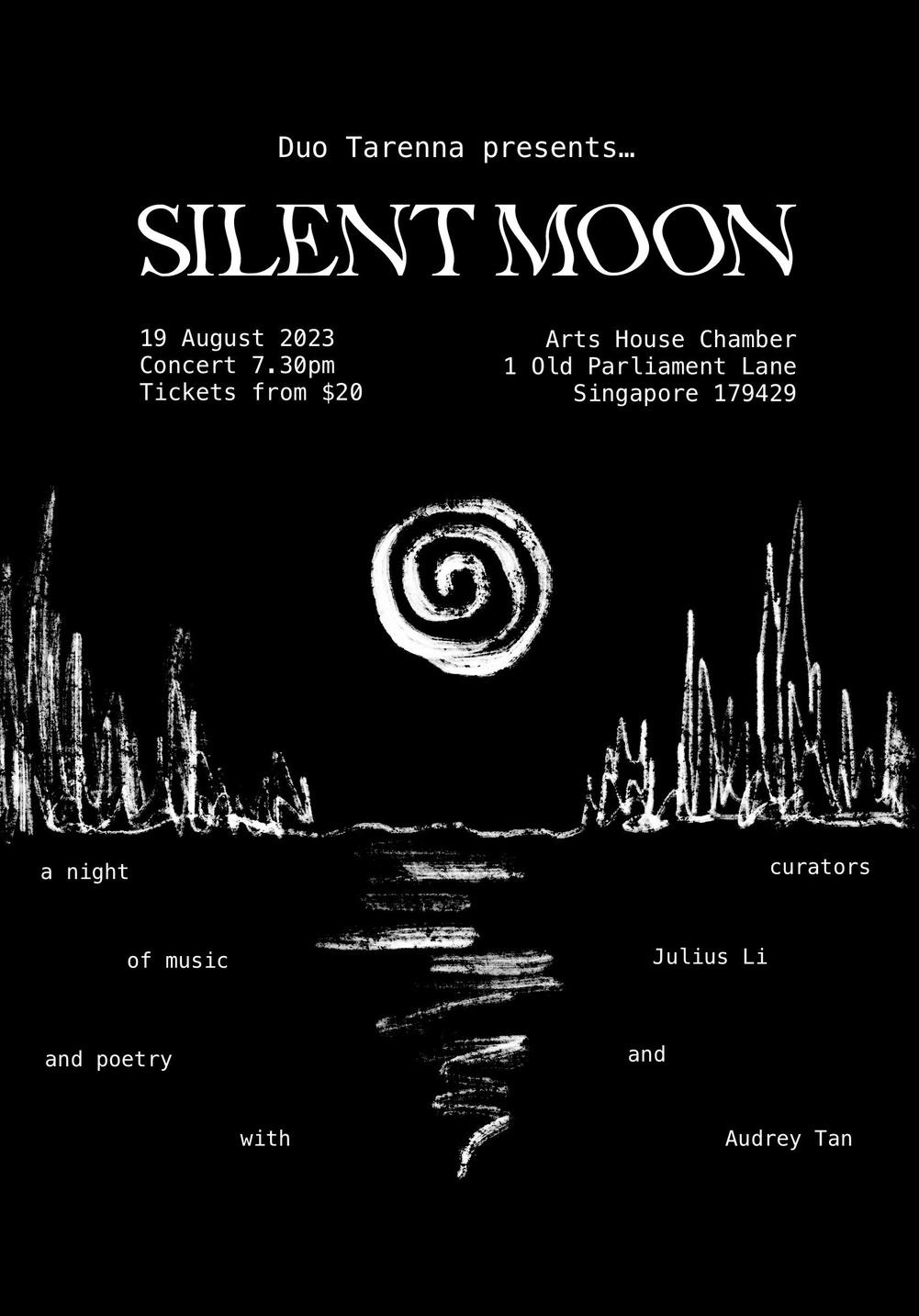Biographies.
Tan Tiag Yi is a violinist, composer and arts administrator based in Singapore. He completed his Bachelor of Arts in Music with First Class Honours at St Anne’s College, University of Oxford in 2021, where he studied violin with Caroline Balding and composition with Professor Martyn Harry. As a performer, Tiag Yi is passionate about advocating for the music of our time, and has premiered a total of four brand new Singa Singaporean works in two well-attended concerts in 2022 as part of Duo Tarenna. While at university, Tiag Yi was awarded the St Anne’s Camerata Bursary and performed in termly concerts by St Anne’s Camerata under the direction of Dr. John Traill. Tiag Yi was also fortunate to receive a bursary to attend the 2021 Dartington Summer Music School & Festival, where he participated in violin masterclasses with genre-crossing violinist Thomas Gould and chamber music coaching with members of the Leonore Piano Trio. As a composer, Tiag Yi was most recently awarded Special Commendation at the 2021 Henfrey Prize for Composition for his work Cross Sections, written for period woodwind quartet and premiered by leading period ensemble Boxwood & Brass in 2022.
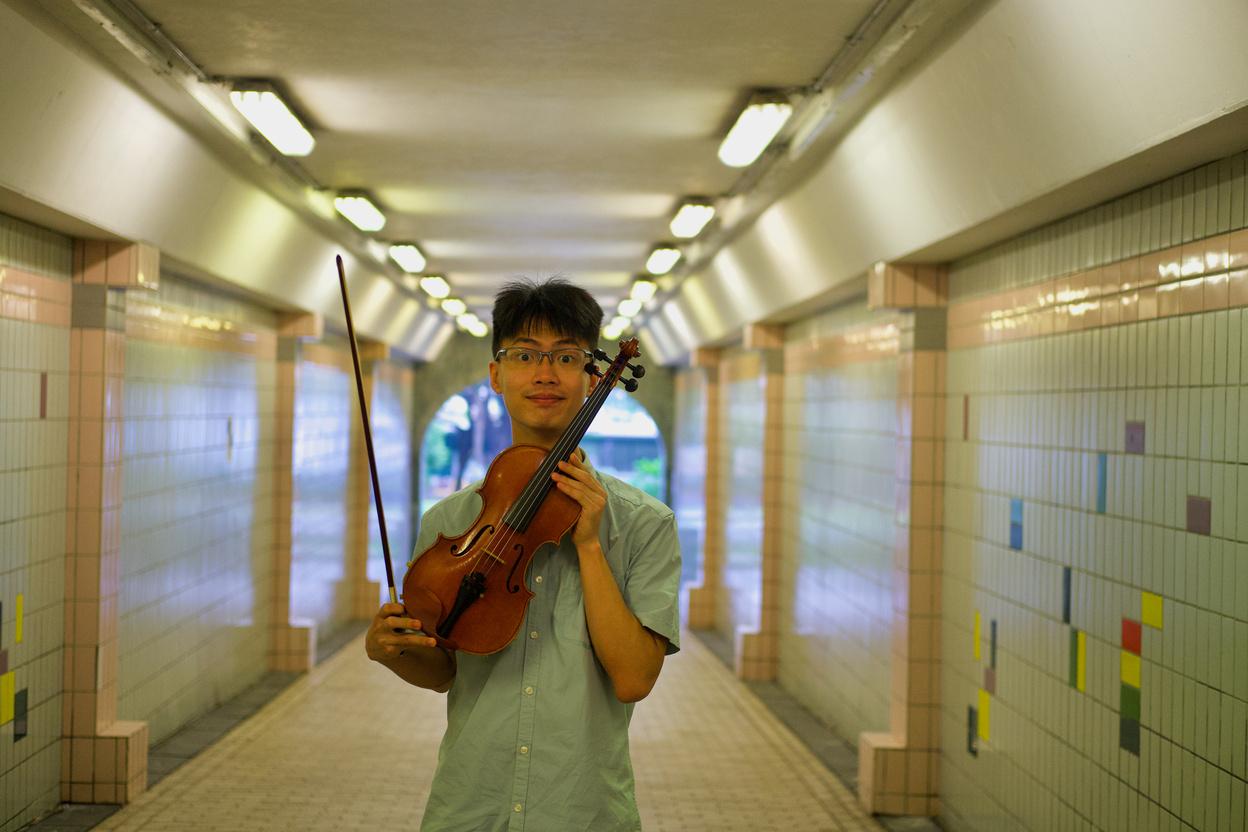
Cindy Ow is a violist and PhD student at University of California, San Francisco, in the Developmental and Stem Cell Program. She graduated with honours from Johns Hopkins University in 2021 with a Bachelor of Science in Molecular and Cellular Biology and a minor in Music, with the support of the A*-STAR National Science Scholarship. She took instrumental lessons with Jay Liu at San Francisco Conservatory
of Music and Rebecca Henry at Peabody Preparatory, and has performed with SF Civic Music Symphony and Hopkins Symphony Orchestra, as well as Singapore-based orchestras Orchestra of the Music Makers, Singapore National Youth Orchestra, and re:MIX. She was a member of the Homewood Chamber Music Seminar, coached by Lior Willinger. In 2016, Cindy was awarded the Platinum and Paul Goh Bow awards at Singapore Performers’ Festival in Singapore in the viola category. Her previous teachers include Zhang Ying and Dr. Tan Wee Hsin. While she is not in the lab, she enjoys concertgoing, watching films or visiting museums.
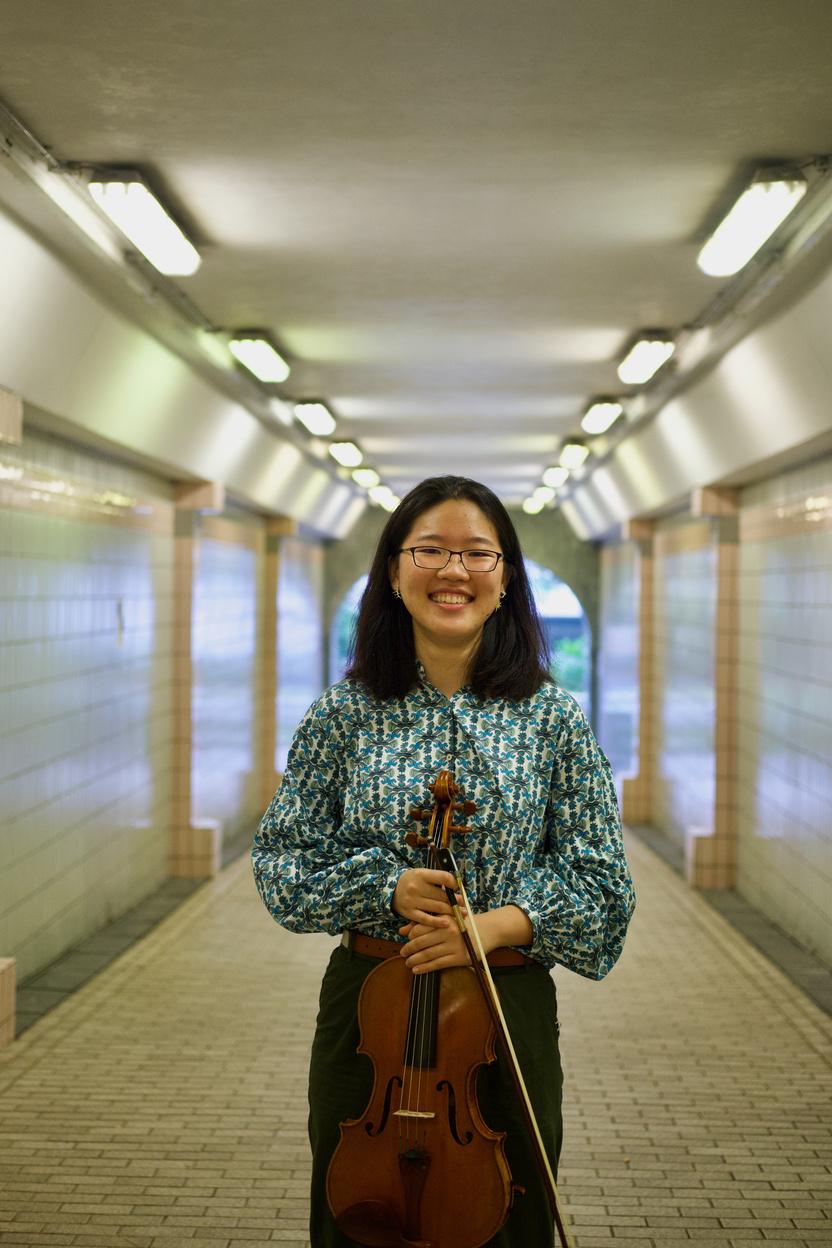
Julius Li and Audrey Tan are a couple based in Singapore. They are both teachers, and apart from literature, they love food, music, film, and food. Julius’ poems have appeared in Quarterly Literary Review Singapore, and Audrey’s fiction and poetry have appeared in local and overseas publications.
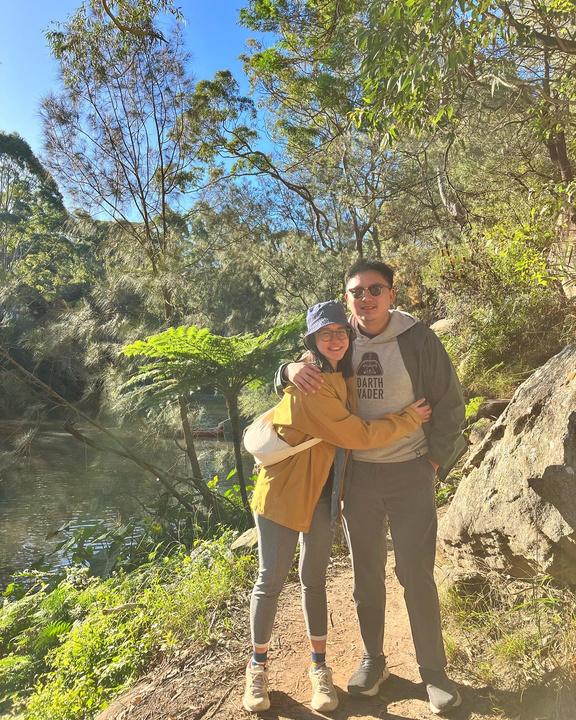
Reflections on Our Curation of Poems
Julius Li and Audrey Tan
We first met Tiag Yi and Cindy at a house party. They were preparing for a concert and we served as a trial audience. Tiag Yi told us about a project in which he had matched the poems of Shirley Lim to music. We spoke about poetry and found a common interest in prosody and aural forms. Months later, we received a text from them asking if we could choose some poems for a setlist of theirs. When we actually got down to the business of trying to pair poems with the music, the task turned out more challenging than previously thought. The possibilities were endless, there were just too many poems!
What resulted was a long night spent listening to the setlist while combing through our memories of favourite poems, then rushing to search up a poem, or flipping through our books to see if what we remembered of the poem was a) accurate; b) matched the music. Although many of the shortlisted poems seemed compatible on the page, they felt at odds with the music once they were read aloud. The main difficulty of reciting poetry to music is that poetry is itself a musical form – it is like layering a song over another song. And so we naturally steered away from poems with direct musical references in their subject matter to avoid making this layering feel overwrought.
Biographies
cont'd.
Yet, there were poems that made use of aural devices that fell effortlessly into place with the music. Among our selection, the excerpt of Hamid Roslan’s “parse” stands out for its performative quality. When we first heard the progression of Silent Moon, Julius immediately jumped for his copy of Hamid’s parsetreeforestfire. It was Audrey’s first encounter with that excerpt; reading it for the first time – aloud, and along to the musical track – the pairing felt true, epiphanic. Having practised the excerpt of “parse” multiple times, Audrey feels that the full meaning and pleasure in Hamid’s poetry lies in its recital. It was also less of a surprise than an affirmation when we later read a critical review of Hamid’s book, comparing the poet’s work to music:
The reader who treats this book as a musical score (reading it “out loud with one ear covered with a finger” as Hamid’s mentor, Lawrence Lacambra Ypil cheekily puts it), pausing only to breathe in between the acts—be warned: the notes here are so far from speech, so hard to hit, that your entire musical range will be stretched and challenged. (Hoo para. 4)
However, the rest of our endeavour was less straightforward. “Too busy, too busy!” Julius often proclaimed that night, as Audrey tried out the first few lines of a shortlisted poem. Despite our limited vocabulary for both music and poetry, it became clear that space in the poem, in terms of aurality and sentiment, was a critical criteria so that it would not grate on the music. Although we recognised how words could create counterpoints to the music, they needed to do so in a way that felt meaningful or serendipitous. We found that the musical pieces were mostly dense with emotion. Therefore, the poems required a sense of looseness to speak with and to the music.
We relied a great deal on sensing. Because neither of us are professionals in music, we were impaired by our illiteracy in the medium, yet somehow liberated to feel our way around each musical piece. Thus, the imagery that sprang to us is very much subjective – mainly, the music reminded us of seasonal landscapes, which is why the natural world (and consequently, fruits!) is a recurring motif in these poems.
The pairing of Duo for Violin and Viola in G Major with LiYoung Lee’s “From Blossoms” would be a clear illustration. The music evoked in us a sense of renewal and its exuberance could not be contradicted. We were reminded of “From Blossoms'' because of its overt summery connotations and its tone - a blend of tenderness and ecstasy, a denial of mortality. This can perhaps be most readily seen in the insistent repetitions that occur in the last stanza:
There are days we live as if death were nowhere in the background; from joy to joy to joy, from wing to wing, from blossom to blossom to impossible blossom, to sweet impossible blossom.
Aside from external landscapes, the call-and-response dynamic of the violin and viola also intensifies the fraught emotional landscape that sweeps through many of these poems. For instance, the ache of Arthur Yap’s speaker in “battersea park, london” (who ponders in the final lines: “i am here because / where are you?”) colours the strained dialogue between the instruments in Sonatina Violin and Viola, Op. 226: II. Likewise, the speaker of Miriam Wei Wei Lo’s “Fruit in Season iii) In Autumn I Take Up My Knife”, alienated from domestic life, is further taunted by the surreptitiously discordant music in Duo for violin-viola II. Lento.
In retrospect, we also noticed how a few poems focused on quotidian moments with everyday objects – the “gloved hand bunched over a cigarette” from Yap’s “battersea park, london” (line 10) could very well be the same quietly restless hand that “swipe(s)” the “dish-sponge” with “anger or regret” Lo’s “Fruit in Season iii) In Autumn I Take Up My Knife” (line 5). These intimate details felt like an important counterpoint to the expressive music.
Another poem you will hear tonight is a favourite of Audrey’s –Yap’s “paraphrase” was a mainstay on the reading list of the creative writing classes she used to teach. The music also led us to revisit work we’d enjoyed before but had perhaps neglected over time – nevermind that some did not fit our final selection. While narrowing our scope, the music also nudged us to look beyond our reading range. If a poem we loved didn’t fit, we scoured through other works by the same poet; otherwise, anthologies were excellent resources. In fact, one or two poems tonight are fresh to us, stumbled upon during this very selection process.
We hope that like us, you’ll encounter this curation with the same sense of possibility, and that you might discover new ways of experiencing both musical mediums.
Works Cited
Hoo, Shawn. “Singlish Modernism.” Asymptote, 29 Oct. 2020, https://www.asymptotejournal.com/blog/writer/hamid-roslan/ Accessed 17 July 2023.
Lee, Li-Young “From Blossoms ” Rose: Poems BOA Editions, Ltd , 1986, p. 21.
Lo, Miriam Wei Wei. “Fruit in Season iii) In Autumn I Take Up My Knife.” To Gather Your Leaving: Asian diaspora poetry from America, Australia, UK & Europe, edited by Boey Kim Cheng, Arin Alycia Fong, Justin Chia, Ethos Books, 2019, p 416 Yap, Arthur. “battersea park, london.” The Collected Poems of Arthur Yap. NUS Press, 2013, p. 200.
Duo in G Major for violin and viola, K.423
Wolfgang Amadeus Mozart
The story behind the two duos for violin and viola, K.423 and K.424, written by Wolfgang Amadeus Mozart is a curious one. In 1783, Michael Haydn, Joseph Haydn's younger brother and prolific composer of church music, had taken the role of composer and musician at the court of Hieronymus von Colloredo, the Archbishop of Salzburg. Unfortunately, Haydn had fallen ill and was unable to complete a set of six duos for violin and viola commissioned by the Archbishop. According to some accounts, to make sure that the Archbishop does not cut his friend's salary in half, Mozart stepped in to compose two duos, completing the set. There are some cracks in the story, namely why Mozart would do such a thing owing to his frayed relationship with the Archbishop.
It is impossible to miss Mozart's duos amongst the six. Unlike Michael Haydn, Mozart treats the violin and viola as equal partners, often fighting over who gets the theme or melody. The first movement may be the most dynamic of the three, with melodies and arpeggiated figures constantly jumping from violin to viola to violin. The slow, second movement perpetuates the lively call-andresponse. Finally, the duo ends with a cheeky, exuberant, sometimes comedic sonata rondo.
Written by Cindy Ow
From Blossoms Li-Young Lee
From blossoms comes this brown paper bag of peaches we bought from the boy at the bend in the road where we turned toward signs painted Peaches.
From laden boughs, from hands, from sweet fellowship in the bins, comes nectar at the roadside, succulent peaches we devour, dusty skin and all, comes the familiar dust of summer, dust we eat.
O, to take what we love inside, to carry within us an orchard, to eat not only the skin, but the shade, not only the sugar, but the days, to hold the fruit in our hands, adore it, then bite into the round jubilance of peach.
There are days we live as if death were nowhere in the background; from joy to joy to joy, from wing to wing, from blossom to blossom to impossible blossom, to sweet impossible blossom.
Li-Young Lee, “From Blossoms” from Rose. Copyright © 1986 by Li-Young Lee. Reprinted with the permission of the publisher BOA Editions Ltd., www.boaeditions.org.
Sonatine for violin and viola, Op. 226
Darius Milhaud was born in 1892 in Marseilles to Jewish parents but grew up in Aix-en-Provence, though he was forced to move to the United States later in the 1940s with the outbreak of the Second World War. His musical language was freely influenced by a range of musical genres and was indebted to as much as the Western classical tradition. Well-known today as a member of the infamous Les Six (The Group of Six) in France, Milhaud was one of the prominent contemporary composers of the 1920s and 1930s that chose to embrace musical influences outside of Western classical tradition, with works like La création du monde and Saudades do Brasil revealing Milhaud’s admiration for jazz and Brazilian popular music respectively.
Darius Milhaud
Dedicated to Laurent Halleux and Germain Prevost of the Pro Arte Quartet, the Sonatine for violin and viola by Darius Milhaud is one in a succession of works that Milhaud wrote for members of this ensemble. The outer movements of the work display a wide variety of contrapuntal invention – the musical material is constantly placed in new contexts that arrive at lightning speed. The energetic character of the first and third movements is balanced with the deeply sombre and introspective nature of the second movement. It begins with a plaintive viola melody, later repeated in the violin, before transitioning to an ethereal middle section. To close the movement, the opening viola melody is then repeated, but dies away to a series of hushed chords, dying away like a whisper.
Written by Tan Tiag Yi
paraphrase
when one wonders how to begin to talk about something, the word swallows the world. the word comes close to carrying its own ontology, its own reward for being: all the way to hakōne words were hung on every tree. the most striking, startlingly orange, tuned by the breeze. words, maple leaves. words were brown moss, mellow sunlight with soft hair.
words were on the lake; sea-mews spanning circles, white on white foam of the boat’s wake. a translucent mist held the banks in check. then, a sudden reined splash of muted colour, a shape proffered itself. the image beckoned
Arthur Yap
the eye, a word whispered itself: it’s a blue moored boat, a clump of willows. words were a crocodile of schoolboys jostling & laughing on the deck
the lake was a sheet of glass; everything a smaller mirror beneath. on the surface, a catamaran floated us, words, all the way to hakōne, words were.
wintry branches reflected in water are more clearly etched than the actual in a classical collapse of the grey sky. everything is growing downwards. these, and these many acres of undiluted melancholy
are winter landscape, a free mind, a free mind that throws everything whether roaming or hibernating at random into a picture. my gloved hand bunched over a cigarette is a strange little animal with a filtered tail. i move, and it moves leaving a little puff of trail. in the frozen pond, upside down ducks are other bits of surrealistic nonsense,
the madness of the season. Winter the landscape cheats roundthecorner.
i am here because where are you?
Silent Moon
Silent Moon is a reference to the break in the stillness of winter that is indicative of a gathering of energy. Like the silence before the storm, the Silent Moon offers an opportunity to cleanse the past so that we might better shift our attentions to future growth.
This concept is often depicted through certain double-visaged gods and goddesses such as Janus, who looks simultaneously backward at the past and forward to the future.
A silent moon exists in the deep silence of winter earth after the solstice celebration heralding the birth of energy and the return of ever lengthening daylight.
Arthur Yap battersea park, london
Poems published with the permission of the estate of Arthur Yap and NUS Press.
Augusta Read Thomas
This is a time for stillness.
The quality of this moons' energy is vivid.
Silent Moon was commissioned by, and is dedicated with admiration and gratitude to, Almita and Roland Vamos.
The duration of this work is 8-minutes and is in 3 movements played without a pause. The music goes full-cycle, coming back to its exact starting point, as if we hear one orbit.
— Augusta Read Thomas, 2006
The programme note of Silent Moon is reproduced here with the kind permission of Augusta Read Thomas.
excerpt from parsetreeforestfire
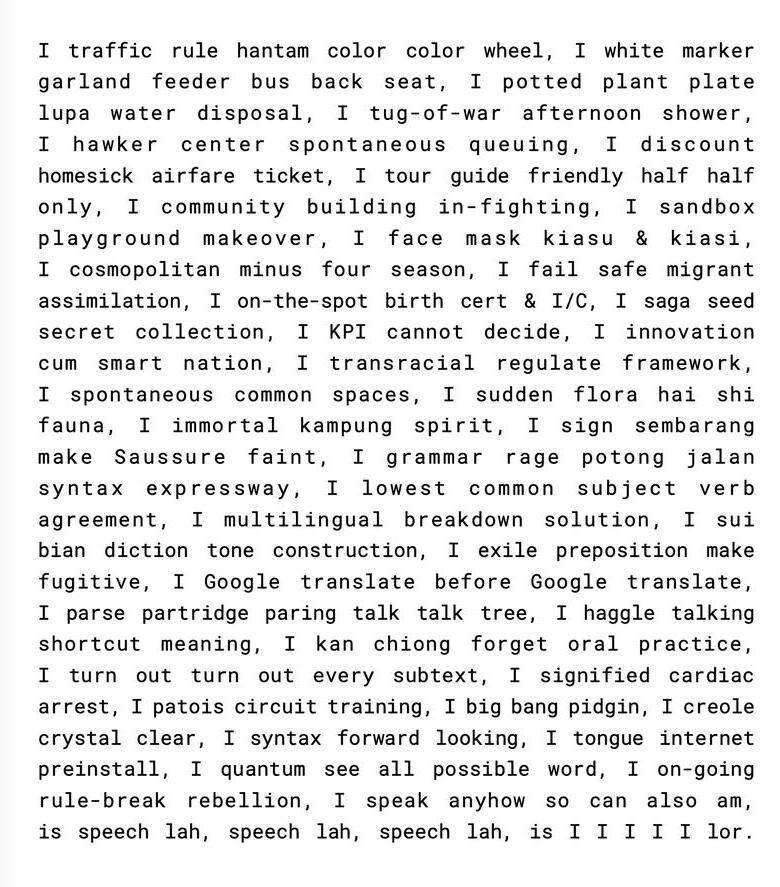
Excerpt from pg. 18 of parsetreeforestfire reproduced here with permission from Hamid Roslan and PAGESETTERS SERVICES PTE LTD
Hamid Roslan
Duo for Violin and Viola (1954) Quincy Porter
Quincy Porter (1897–1966) was an American composer, academic, and violist. Born in New Haven, Connecticut, he studied at Yale University during his college years and pursued further studies in Paris and New York. Porter held academic positions at the New England Conservatory of Music and Yale, and he is mostly remembered for his achievements and contributions to academia, less so for his compositional oeuvre. In his life, he produced nine string quartets, several concertos, two symphonies, and many chamber works. Duo for violin and viola (1954) is amongst one of them.
Porter was an excellent violinist, violist, and chamber musician; it was said that he “could handle any viola part in the chamber music literature with complete technical security.” (Boatwright, 1967). His deft grasp of the chamber medium is evidently displayed in Duo (1954), a work he wrote late in his life. With only two voices, Porter was able to create exciting, full, contrapuntal lines peppered with dissonances and energetic motives. Porter dedicated the work to Joseph and Lilian Fuchs, a violin-viola duo active in the New York music scene. The Fuchs Duo premiered the work at the the Second Musicians’ Guild concert on January 11, 1954, one week after the work’s completion. The first movement begins with a dance-like motive in the violin juxtaposed against dissonant viola chords. The motive evolves rhythmically and harmonically in an imitative fashion. The second movement immediately follows with lyrical, hymn-like melodies. The final movement is quick and lively, the two voices always in canon, and ends with a bang.
Written by Cindy Ow
Fruit in Season
i) Eating Loquats in the Spring Rain
Miriam Wei Wei Lo
Ripe at last. The spindly nondescript tree at the front of the church has finally taken some colour: small yellow moons in clusters, Chinese lanterns. Rain stammers down like bursts of praise from a hesitant tongue.
Orbs of pale sunlight, lightly furred skin gives way to melon sweetness. Smooth brown seeds spit out on the pavers like stones. Sticky-fingered, the youngest child gobbles, calling out: “More, more!” Nothing but happiness.
(ii) What Rhymes With …
peaches? Beaches. A peach of a beach. Gracetown in summer. A soft fur of heat over bodies. The water, icy. Exploding gently on legs as fruit in the mouth. Sand the tecture of peach stone: gritty, rough. China, a memory refracted through tropics: small fat god, white beard, riding a deer. A Chinese Santa CLaus. In his hand, the fruit of which we speak: everything peachy.
iii) In Autumn I Take Up My Knife
The view from the kitchen sink takes in the garden, the fence, the tall trees in the valley, the children shouting and crying, the feijoa tree, shedding its fruit, like large green tears or bullets as big as a human heart.
Each swipe of the dish-sponge is anger or regret, choices have consequences, consequences constrict to the tightness of skin on a fruit, this feijoa I slice into, savagely, and stop. Pineapple-scented.
The soft fragrant jelly within.
iv) Prayer in Mid-Winter
Just over the fence, the neighbour’s mandarin lifts dark green branches to a low grey sky. Fruit in topmost branches, held like an offering. What can I offer? Only a heart that is broken, broken as this mandarin: ripped peel and segments spread out on the palm, each minute sac of juice curved in supplication: Forgive me. Rain breaks from the clouds in thundering absolution. The whole house echoes. Half-afraid and laughing, the children run in and throw themselves at my legs.
from
Wei Wei Lo and WA Poets Publishing.
Poem sequence reproduced here with permission
Miriam
The “Fruit in Season” poem sequence is from Miriam Wei Wei Lo’s new poetry book


Who Comes Calling?
It is available from www.miriamweiweilo.com
Thanks to...
Arts House Limited and its production team
Audrey Tan and Julius Li for poetry curation and recital
Our front of house Tan Yan Chong, Dion Ow, Chin Ying Wu
Cadenza International Summer Music School coaches for coaching us National Arts Council for supporting our summer school endeavors
You for coming!
Permission to perform and reprint all poems presented at tonight's concert, Silent Moon was given.
Post-Concert Survey
https://forms.gle/3uGQb4o2FzndKUGD6

